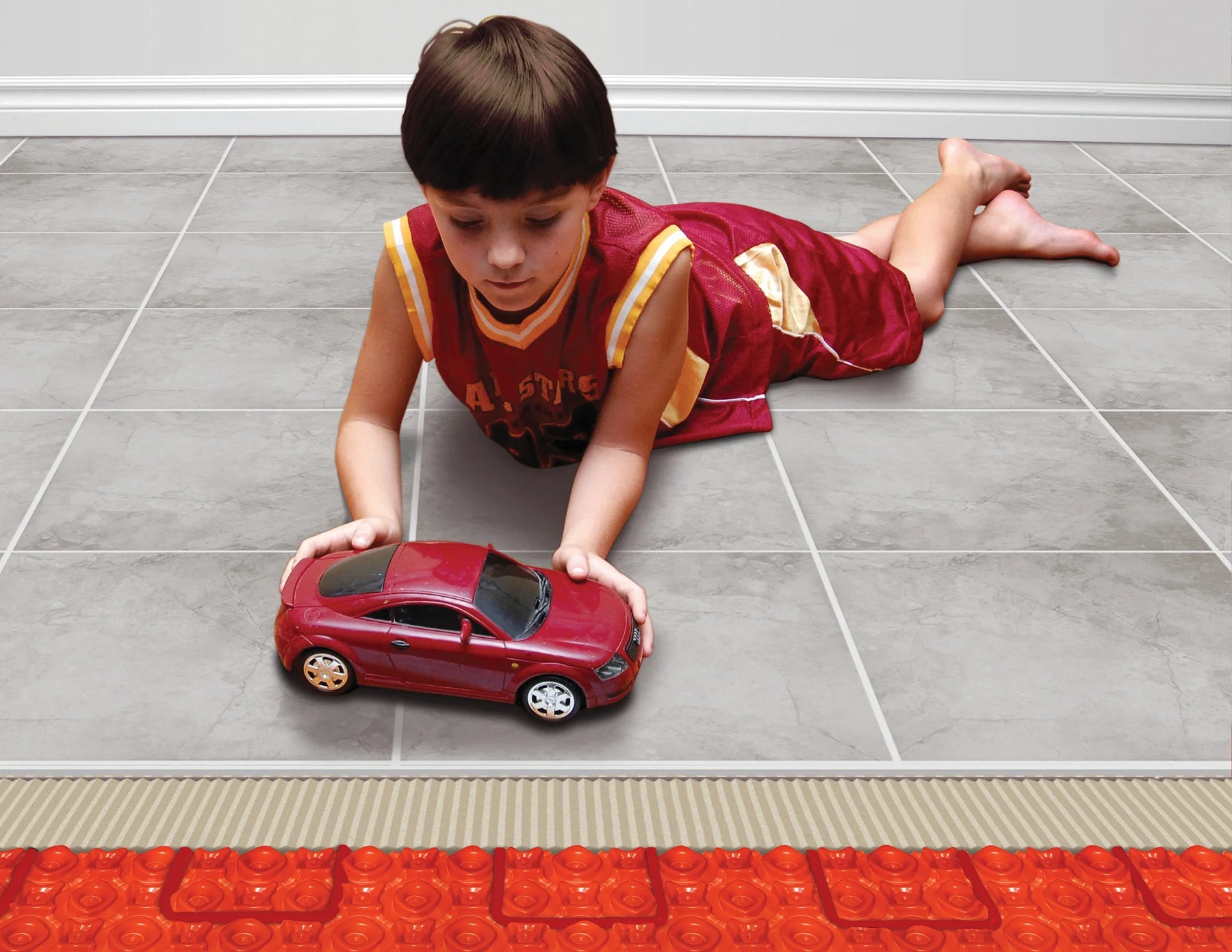
(502) 783-7995
(502) 783-7995


When you invest in underfloor heating under tiles from ProLux, you want more than just warm feet; you want comfort, efficiency, and long-lasting performance. But here’s the tricky part: cranking the heat all the way up doesn’t mean you’ll love it more. In fact, your toes aren’t training for a sauna marathon, so finding the sweet spot is essential. The right temperature ensures your floors feel amazing, your energy bills stay manageable, and your tile stays in top condition for years to come.
Tile is a superstar when it comes to retaining heat. Its dense composition allows it to absorb warmth from your floor heating system and release it slowly over time. This means that even after the system turns off, you can still enjoy residual warmth for a while. However, the heat you feel underfoot isn’t exactly the same as the thermostat setting. Factors like heat loss to the subfloor, air temperature, and your flooring’s thermal mass all play a role in how warm it actually feels.
Think of it like making toast. You set the toaster to a certain level, but depending on the bread type, you’ll get slightly different results. Similarly, with heated tile floors, surface temperature can vary based on tile material, insulation, and installation quality.
For most homes, the sweet spot for heated tile floors falls between 76°F and 85°F (24.4°C to 29°C). This range delivers noticeable warmth without unnecessary energy waste. In colder climates or during frosty mornings, you might nudge it closer to the higher end for that spa-like feel. Conversely, in milder weather, setting it in the mid-70s can keep things cozy without making you kick off the slippers in a hurry.
Keep in mind that comfort is subjective. Some people like a gentle warmth underfoot, while others prefer the feeling of stepping onto a heated pool deck in the middle of winter. The key is to find a balance between what feels good and what makes sense for energy efficiency.
| Setting (°F) | Comfort Level | Estimated Energy Use | Best For |
|---|---|---|---|
| 72°F (22°C) | Mild warmth | Very low | Mild climates, minimal heating needs |
| 78°F (25°C) | Comfortable | Low | Every day kitchen or bathroom comfort |
| 82°F (28°C) | Toasty | Moderate | Cold mornings, winter use |
| 85°F (29°C) | Very warm | Higher | Extra cozy feel in colder climates |
This table offers a quick way to match your comfort preference to energy efficiency. Notice how going from 78°F to 85°F might feel great in the moment, but it also increases energy consumption significantly over time.
While 76–85°F is a solid range, your perfect setting might vary depending on several factors:
All these variables mean your “best temperature” might change throughout the year, and that’s perfectly normal. A programmable thermostat can help automate those shifts so you don’t have to remember to make the adjustments manually.
If you want to get technical about it (and let’s face it, who doesn’t when it comes to gadgets), a floor-sensing thermostat is your best friend. Unlike an air temperature thermostat, it reads the actual surface temperature of your tile, ensuring accurate and consistent warmth. This is especially useful in rooms like bathrooms, where air temperature can fluctuate rapidly after a shower.
While it’s tempting to crank the heat to “tropical paradise” levels, too much warmth can damage your tile floor and grout. Most manufacturers recommend a safe maximum surface temperature of around 85°F to 90°F (29°C to 32°C). Going beyond that risks weakening adhesives and causing cracks or discoloration over time, a costly “warmth tax” nobody wants.
ProLux systems come with detailed installation guidelines to help you maintain these safe limits. Pairing your heating system with a reliable thermostat that has a floor sensor is key to keeping everything running smoothly and safely.
One of the smartest moves you can make is adjusting your heated floor temperature based on the season. During winter months, you might set your floor at the higher end of the comfort scale to combat chilly mornings and drafts. Come spring and fall, dialing it down just a few degrees can save energy while still providing that gentle warmth you love.
Using a programmable or smart thermostat makes this effortless. You set it once, and it automatically adjusts throughout the year, so you never have to worry about a cold kitchen floor again.
With decades of experience crafting electric radiant heating systems, ProLux delivers products that blend innovation, durability, and ease of use. Our underfloor heating under tiles is designed to provide even heat distribution, longevity, and peace of mind backed by warranties.
We also offer comprehensive support, including installation videos, technical guides, and customer service that helps you every step of the way. Whether you are a DIY enthusiast or hiring a professional, we make sure you have what you need for a flawless heated floor experience.
Finding the best temperature for your heated tile floor is about balancing warmth, safety, and energy use. Follow these tips, trust ProLux products, and you’ll enjoy cozy feet and a happy home for years to come.

Our under floor heating experts will work on the design and layout of your project, for free!